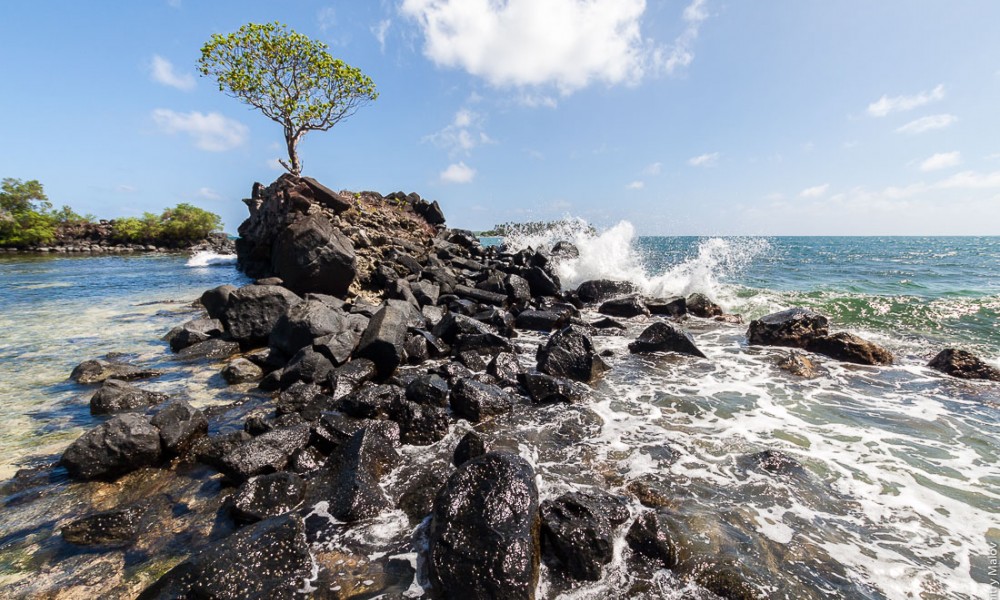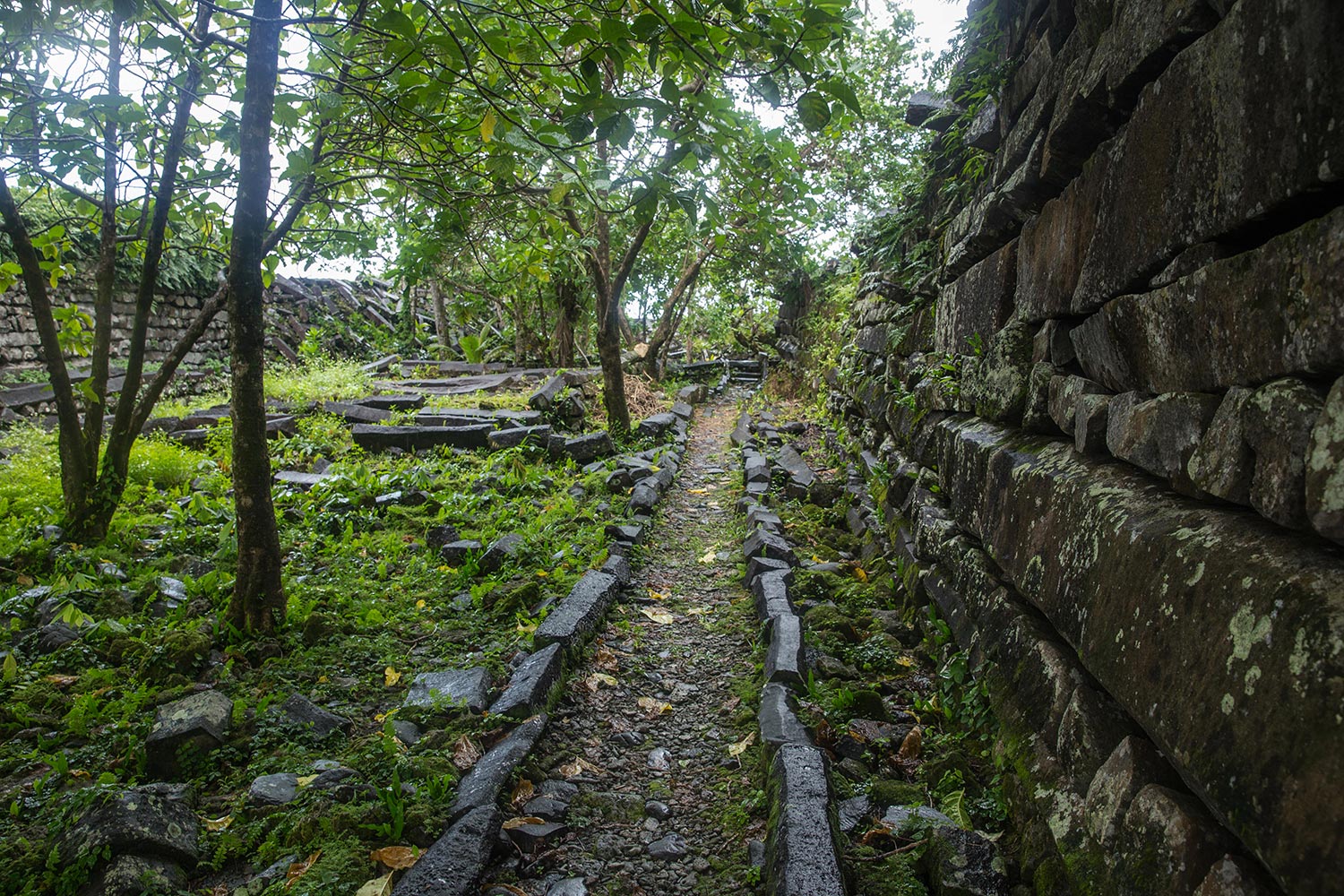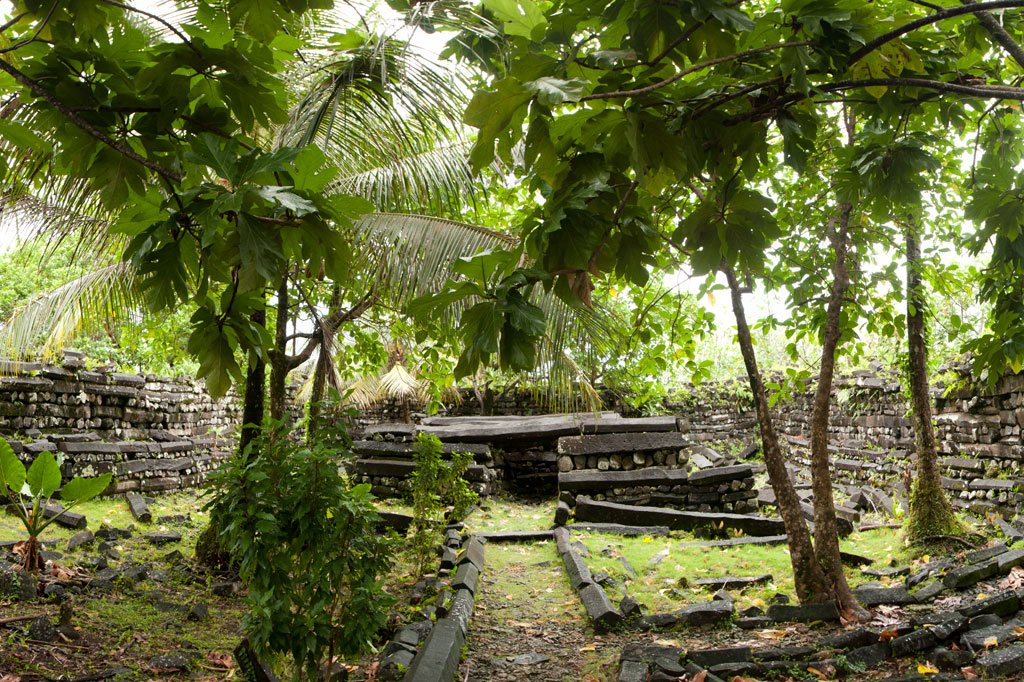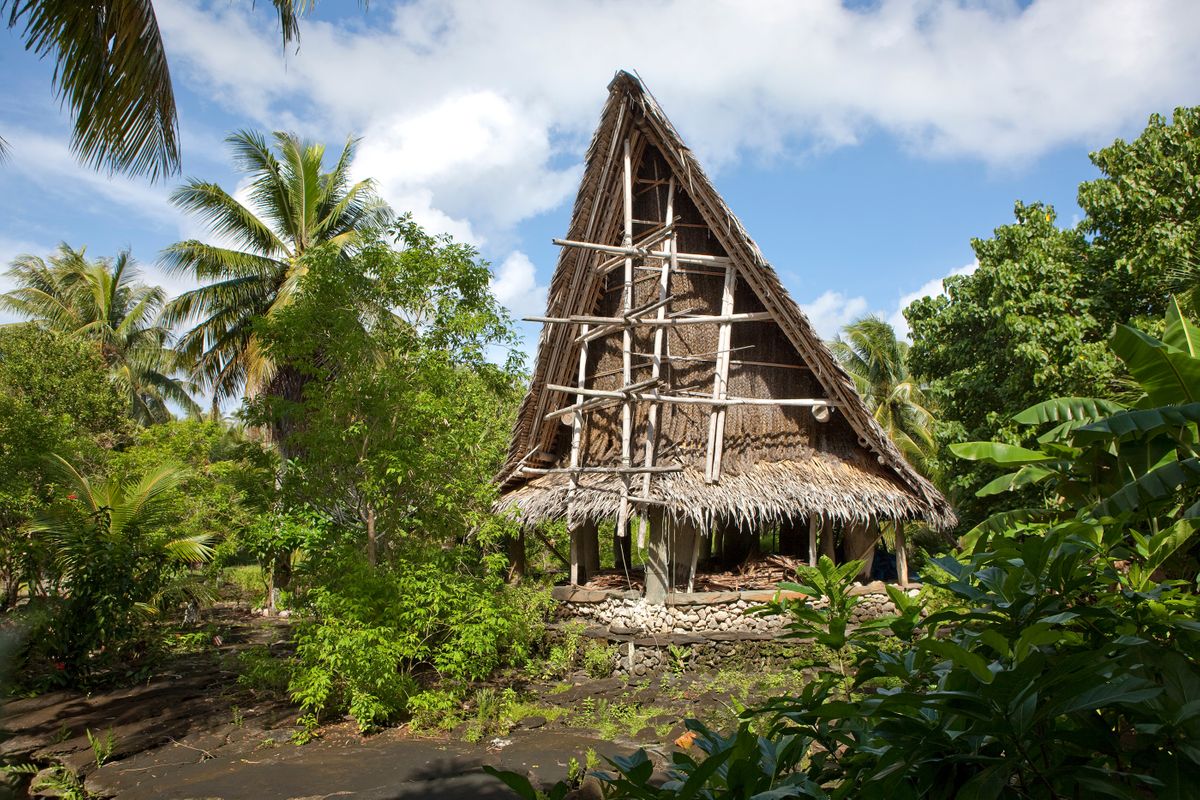Nan Madol: A City over an Abyss

...mighty walls are gnawed away by sea salt but even in thrall of oblivion the forbidden city doesn’t lose its greatness.
From a bird’s perspective Nan Madol looks like a labyrinth of small islands scattered around south-eastern coast of volcanic Pohnpei Island in the west of Caroline Archipelago. An attentive eye will soon spot a system in emerald chaos of shredded scraps of land: ninety two tiny islands shape streets, squares and alleys connected by canals and not at random but in perfectly straight lines. In hours of low tide, water retreats to give way to unprecedentedly mighty metallic constructions. Photo outpostmagazine.com
Photo outpostmagazine.com
Ruins of Nan Madol are distinctive for their unusual pattern of stonework that can be seen nowhere else in the world except also on neighboring Kosrae Island where remains of another ancient city – Lelu – were found. Monumental basalt columns lying crosswise make for colossal constructions eight to eighteen meters high. Weight of the blocks reach and exceed thirty tons. It is even more amazing given that basalt rocks, where raw material was probably mined, can only be found on the other side of Pohnpei.
Imagination of charmed globetrotters defies illiterate aborigines rolling huge blocks therefore it comes as no surprise that occult passions huff and puff around the Pacific Venice. Erection of Nan Madol is attributed to anybody and everybody – aliens from space, a race of giants from lost continent Lemuria or even to an underwater army of the great and dreadful Cthulhu. Even Lovecraft himself in his Shadow over Innsmouth implies that megaliths of Nan Madol and Lelu were created by the Great Old Ones. Photo pohnpei-adventure.com
Photo pohnpei-adventure.com
In fact, there was no need in supernatural intervention – improvised means were just enough. Cooling down lava formed vertical basalt outlets in the shape of hexagonal columns so they didn’t have to do any stone dressing while in order to lift and move the blocks islanders used leverages that were familiar even to primitive men. Stone plates were often damaged during transportation but aborigines learned to patch up gaps using coral heads. Under impressive weight of the stonework, drying coral would turn into a hermetic substance that replaced mortar.
According to data of radiocarbon analysis, Nan Madol was developed in several stages over 5th – 8th century. Shatters of a destroyed atoll that is mentioned in annals under the name Kanamwayso – Residence of Gods – serves as a foundation for water-lodged constructions. Heyday of the city coincides with the period of reign of Saudeler Dynasty. History of fight for power is reflected in epic tales about twin brothers Olisihpa and Olosohpa. They both possessed secret knowledge so it was no trouble for them to conquer all tribes of the island. Caring about prosper of the kingdom, the twins built a city in honor of the god of harvest by making a dragon lift “land of gods” from sea bottom. Upon Olisihpa’s death Olosohpa became a sole ruler of Pohnpei and his son founded Saudeler family that reigned since 1200 through 1648. Photo silversea.com
Photo silversea.com
In south-eastern part of Nan Madol houses of worship are preserved that help compile an idea of religious practices of Micronesian Empire. Gods and goddesses were identified with animals and at that each totem deserved a splendid temple complex located on a separate island. Central temple was situated on Ided Isalnd where they worshiped sea god Reeke in the shape of an eel. Two stone pools survived till our times: one of them was intended for the divine eel, in the second one small fishes were bred to feed the “idol”. On a neighboring island, Nanunsunsan goddess dwelled in the shape of a turtle. Till now divers find shells of sacrifices “goddesses” decorated with pearls on bottoms of canals.
Read also: Lost island of Yap. The land of big money
The Saudelers told chieftains of conquered tribes to relocate to Nan Madol, closer to gods and spirits. For such honors they were supposed to eternally glorify their emperor however through disguise of ostentatious generosity, political motives showed clearly. It was much easier to execute surveillance over potential leaders and limit contacts of senior dignitaries with plain folk, embittered by exorbitant tributes and depredations of royal entourage, while they all were on a limited territory. Fables have it that among rulers there occasionally were cannibals and on their orders people were kidnapped.
Decay of Nan Madol is attributed to invasion of bellicose tribes from Kosrae Island. According to a legend, chieftain of the conquerors Isokelel was a son of the god of storm who decided to teach a good lesson to the last of Saudelers. When royal palace on Pahn Kadira Island was surrounded by warriors, the tyrant jumped into the water and turned into a fish while the city, cursed by the gods, got deserted and came to decay to become a resort for of evil spirits. Photo wanderlust.co.uk
Photo wanderlust.co.uk
Dilapidated mausoleum of the Saudelers on Nan Duvas Island is still considered dominant in Nan Madol. The citadel is surrounded by double fortress walls and three open-ended fortifications, divided by trenches. It is only possible to penetrate the yard through a tiny manhole: when crawling into the fortress on their knees, islanders got filled with sensation of own nonentity. Cold cell in underground prison awaited those who didn’t show required awing while property of victims of royal brutality was seized in favor of the treasury.
There were talks that during Japanese occupation platinum sarcophagi of Saudelers along with other treasures discovered during excavations of temples were taken from Nan Madol. Polite response of Tokyo to official request of American administration of Pohnpei, sure enough, refuted wild rumors… However who knows what mysteries are hidden behind gloomy walls of the megaliths?
Cover photo 2f.ru





















